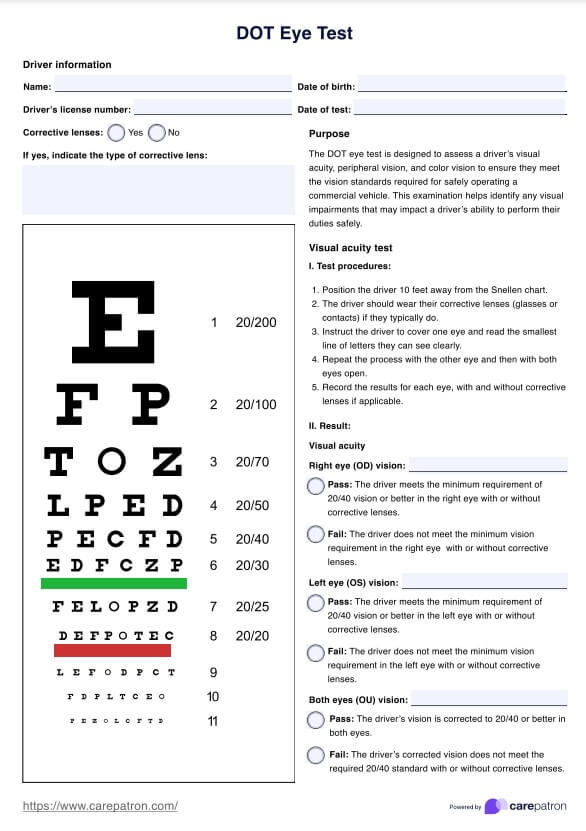Yes, drivers can wear corrective lenses during the DOT Eye Test. If the driver relies on glasses or contact lenses to meet the vision standards, this requirement will be noted on their commercial driver’s license. It is important to test both with and without corrective lenses to document the driver’s uncorrected and corrected vision levels.

Dot Eye Test
Ensure your drivers meet DOT vision standards with our comprehensive DOT Eye Test template. Use it to streamline assessments and improve safety.
Dot Eye Test Template
Commonly asked questions
If a driver fails any part of the DOT Eye Test, they may be required to obtain corrective lenses or undergo further evaluation by an eye specialist. Failing to pass the DOT vision test could delay issuing or renewing a CDL until the driver meets the vision standards. Addressing any vision deficiencies promptly is crucial to ensuring the safety of the driver and others on the road.
Drivers with monocular vision, meaning vision in only one functional eye, must undergo specific examination procedures to assess their vision capability. They must pass the DOT physical eye exam and may qualify for exemptions. Individuals with monocular vision need official evaluations by licensed eye care professionals to determine their eligibility and ensure they meet the required vision standards.
EHR and practice management software
Get started for free
*No credit card required
Free
$0/usd
Unlimited clients
Telehealth
1GB of storage
Client portal text
Automated billing and online payments











